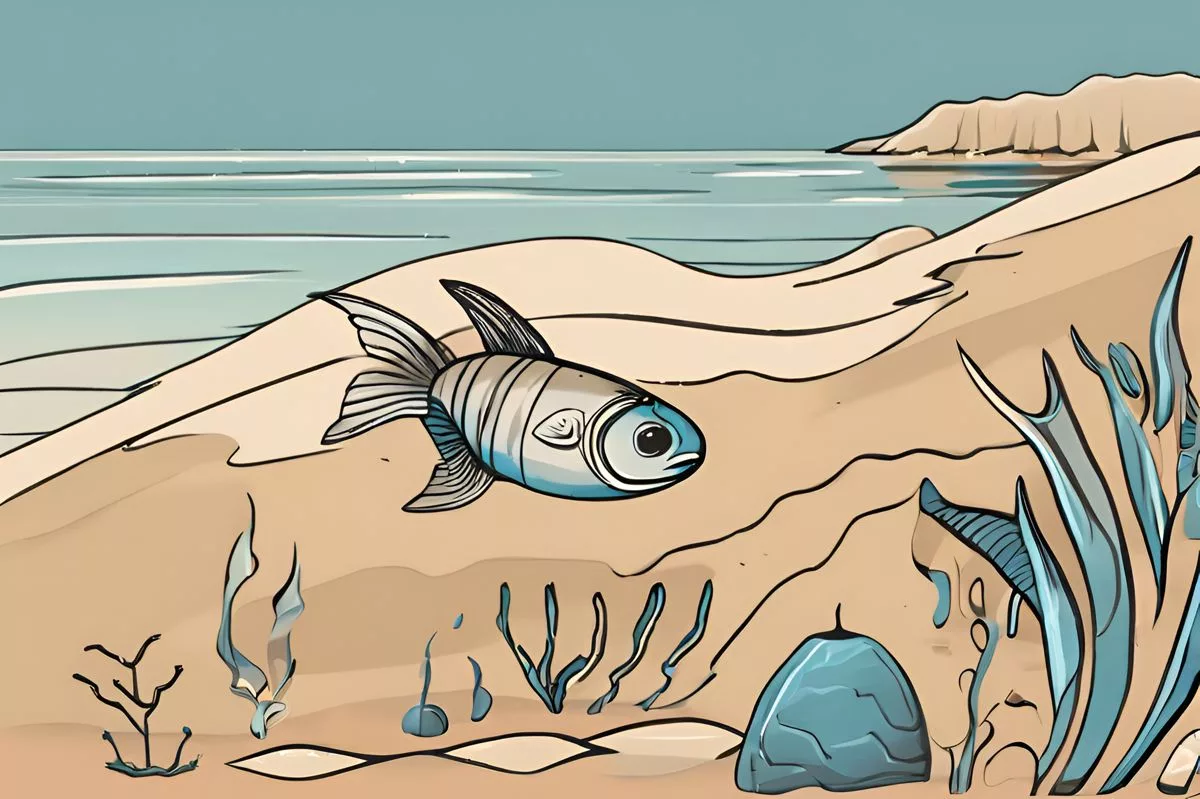Conservationists are working to save the unique Clanwilliam sandfish from extinction by rescuing young fish from the Biedouw River and relocating them to dam “nurseries” on private farms. Thanks to this initiative, hundreds of sandfish have returned to the river to breed, indicating a positive impact on their population. The success of this collaboration between conservationists, farmers, and community members serves as an example of the power of preserving biodiversity and the interdependence of all life forms.
How are conservationists saving the Clanwilliam sandfish from extinction?
Conservationists are rescuing young sandfish from the Biedouw River and moving them to dam ‘nurseries’ located on private farms to protect them from invasive species and shrinking water bodies. Recent evidence suggests that these initiatives are making a positive difference, with hundreds of saved sandfish returning to the Biedouw River for breeding. This effort is a testament to the power of collaborative conservation and sets an example for future initiatives aimed at preserving biodiversity.
The Unprecedented Conservation Initiative
In the far-off reaches of the Cederberg, an extraordinary mission is underway. Its goal is to rescue the Clanwilliam sandfish from the brink of extinction. As reported by News24, a dedicated group of conservationists has been engaged in this crucial rescue mission for the past four years. They have succeeded in saving thousands of these unique fish from the Biedouw River, thereby rescuing them from the twin threats of invasive species and shrinking water bodies.
The sandfish, easily recognized by its characteristic overbite, is a unique species found only in the Olifants-Doring River basin. In recent times, this singular populace has been under threat, with their numbers steadily falling due to the invasion of foreign species like bass and bluegill.
The Rescue Operation and Its Successes
The rescue operation involves carefully catching young sandfish from the river and moving them to dam ‘nurseries’ located on private farms. These nurseries provide a secure environment for the sandfish to grow, shielded from predators. This initiative has been made feasible by the kindness of local landowners who have generously offered their dams for the cause. As a result, the saved fish can mature without the fear of predation.
Recent evidence suggests that this initiative is making a positive difference. Hundreds of the saved sandfish have returned to the Biedouw River for breeding. This encouraging trend indicates that the population of this endangered species might be on the rise.
Cecilia Cerrilla, a PhD candidate closely involved with the project, considers it to be among the most extensive freshwater fish rescue programs ever conducted outside the United States. The operation’s success can be significantly attributed to the combined efforts of local farmers and community members who have contributed their resources and support.
Overcoming Challenges and the Future of SandFish
Despite the challenges presented by invasive species like bass and bluegill, the researchers involved in the project are optimistic about the sandfish’s future. Steps are being taken to remove these threats from critical habitats, paving the way for native species like the Clanwilliam sandfish to thrive once again.
This laudable effort is not just a testament to the power of collaborative conservation, but also sets an example for future initiatives aimed at preserving biodiversity. The tale of the Clanwilliam sandfish is a poignant reminder that every species, no matter how small or seemingly insignificant, has a vital role in the complex tapestry of life.
The Profound Importance of Preserving Every Species
Their preservation is not only essential for maintaining the balance of nature but also enriches our understanding of the world’s diverse ecosystems. The story of the sandfish illustrates the need for concerted efforts in conservation. It stands as an example of how communities can come together to help the survival of a species.
This mission goes beyond simply saving a species from extinction. It highlights the interdependence of all life forms and emphasizes the importance of biodiversity for a balanced and healthy ecosystem. It is a striking reminder that our actions have far-reaching consequences on the world around us.
In conclusion, the tale of the Clanwilliam sandfish is one of hope, endurance, and the strength of collective action. It stands as a beacon for other conservation efforts and reinforces the belief that every life-form, however small or seemingly insignificant, holds immense worth. The story of the Clanwilliam sandfish is a powerful call to action, reminding us of the urgent need to protect and preserve the rich biodiversity that graces our planet.
What is the Clanwilliam sandfish and why is it under threat?
The Clanwilliam sandfish is a unique species of freshwater fish found only in the Olifants-Doring River basin. Their population has been steadily declining due to the invasion of foreign species like bass and bluegill, as well as shrinking water bodies.
How are conservationists rescuing the Clanwilliam sandfish?
Conservationists are rescuing young sandfish from the Biedouw River and moving them to dam ‘nurseries’ located on private farms to protect them from invasive species and shrinking water bodies.
What is the success rate of the Clanwilliam sandfish rescue operation?
Recent evidence suggests that the rescue operation is making a positive difference, with hundreds of saved sandfish returning to the Biedouw River for breeding. This encouraging trend indicates that the population of this endangered species might be on the rise.
Who is involved in the Clanwilliam sandfish rescue mission?
The rescue mission is a collaborative effort between conservationists, local farmers, and community members who have contributed their resources and support to the cause.
What challenges does the Clanwilliam sandfish rescue mission face?
The rescue mission faces challenges from invasive species like bass and bluegill, but steps are being taken to remove these threats from critical habitats to pave the way for native species like the Clanwilliam sandfish to thrive once again.
What is the importance of preserving biodiversity and every species?
Preserving biodiversity is essential for maintaining the balance of nature and enriching our understanding of the world’s diverse ecosystems. The Clanwilliam sandfish rescue mission is a powerful reminder of the interdependence of all life forms and the importance of collective action in conservation efforts.












